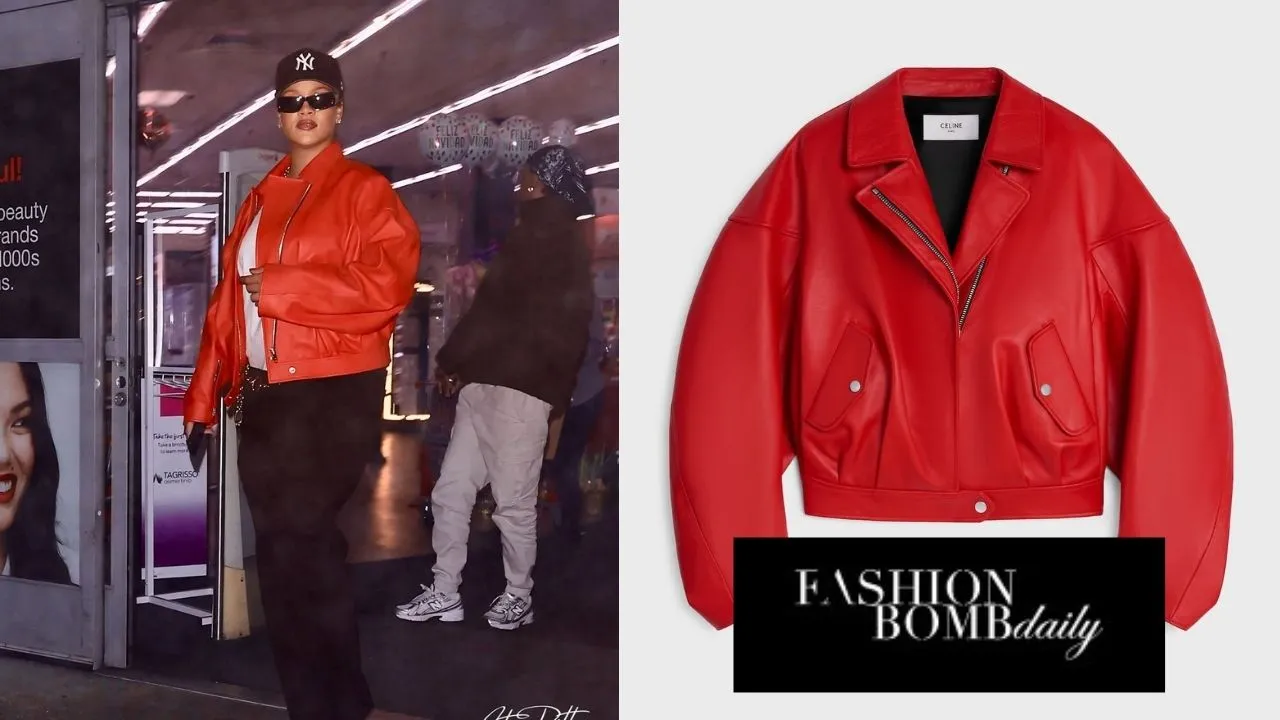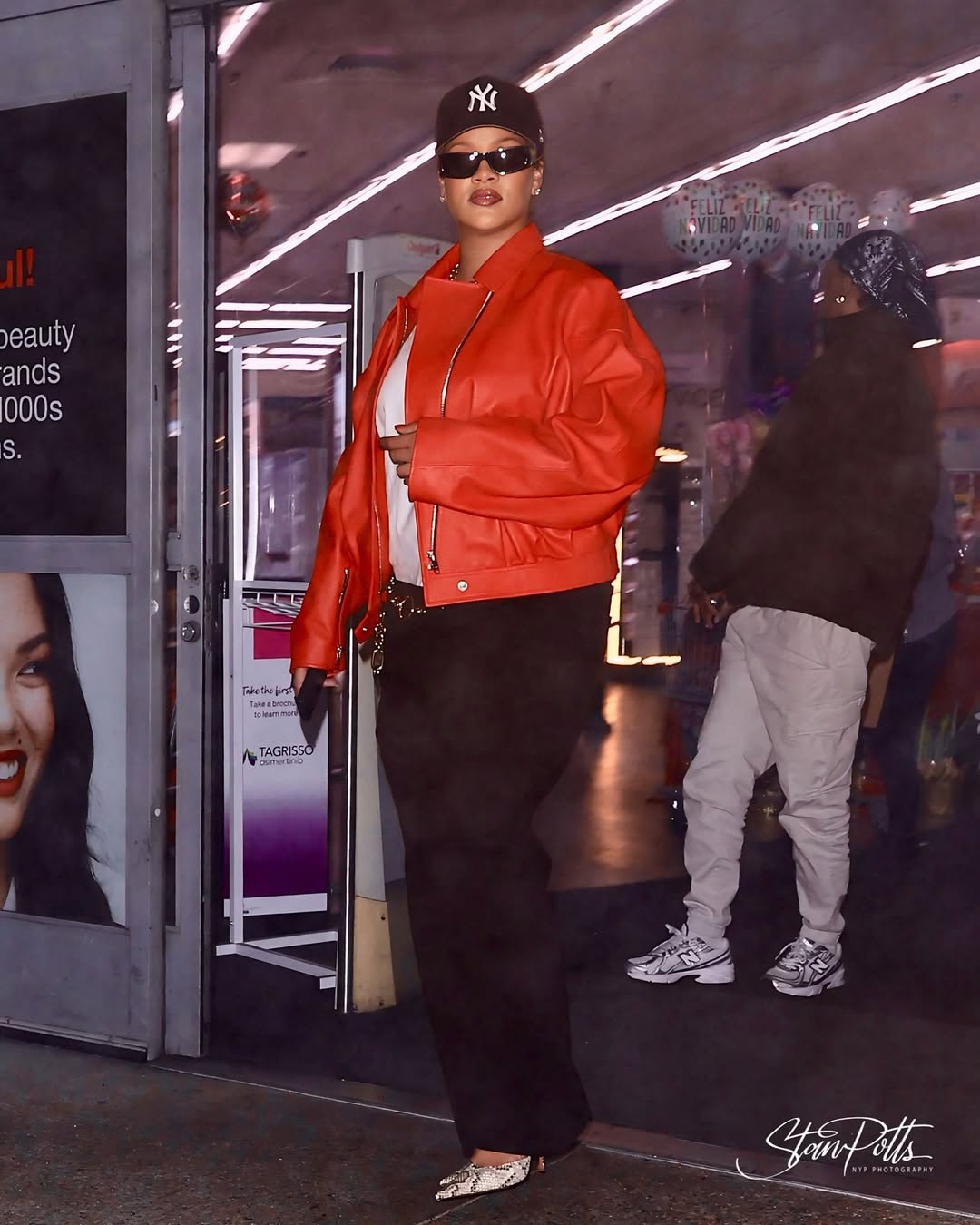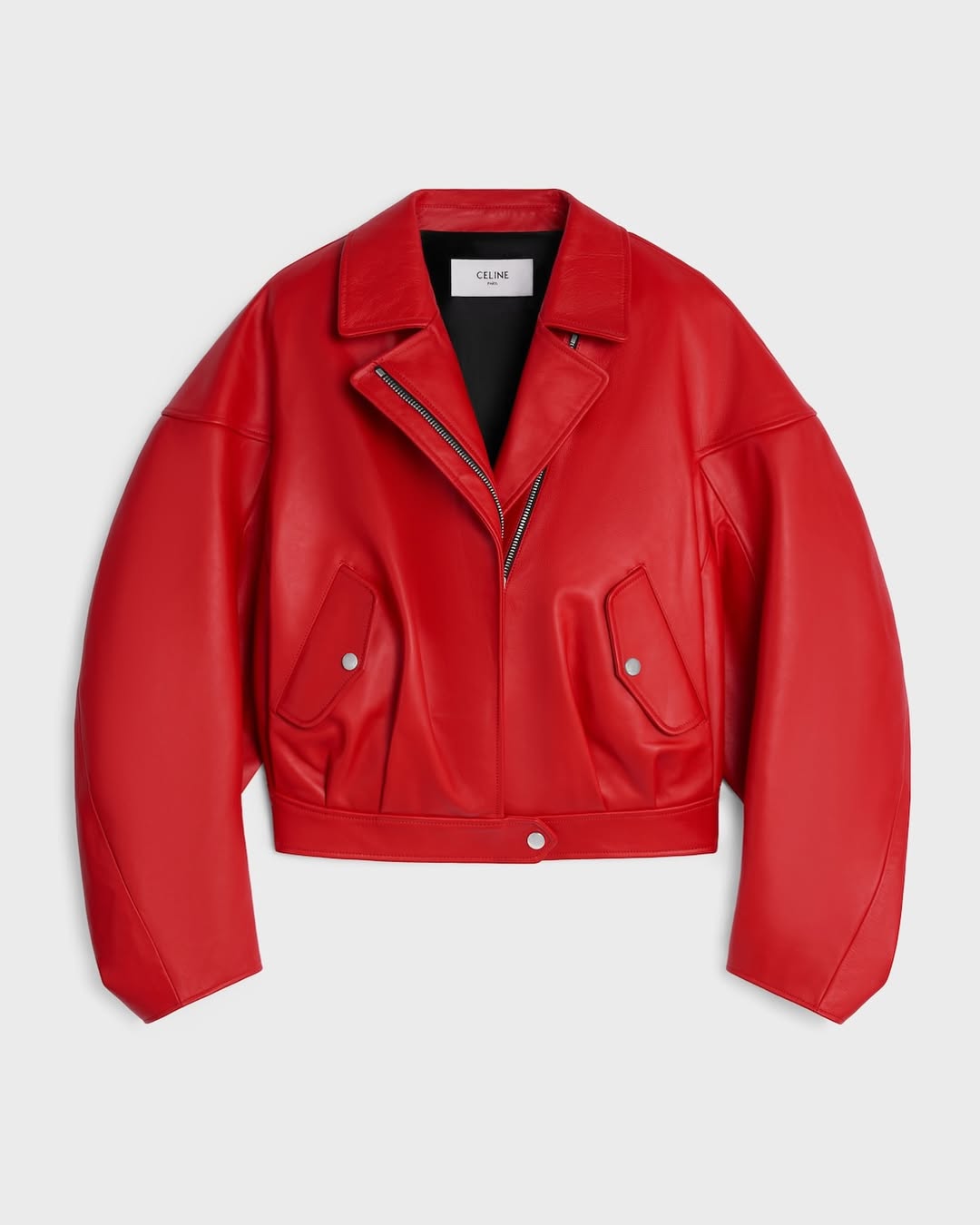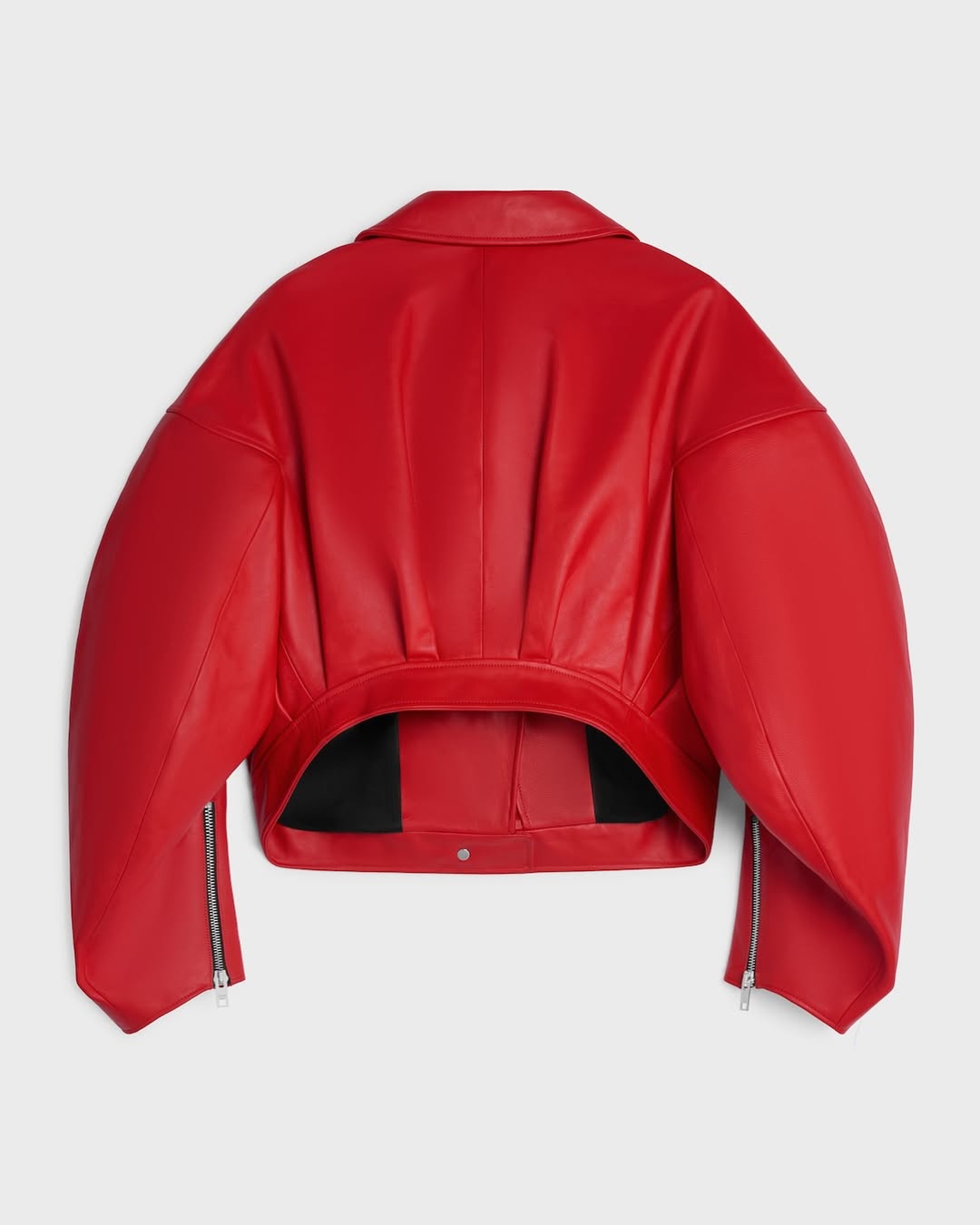Fashion
Rihanna Was Spotted Grocery Shopping in a $7,400 Celine Poppy Jacket

Tis’ the SZN to pop out in the color red and show ’em how it’s done, even on quick errand run to CVS Pharmacy. That’s exactly what time mega superstar Rihanna was on!
The billion dollar mogul, who just gave birth to a baby girl a few months ago, made a bold statement in a $7,400 Celine Poppy jacket that instantly elevated her white tee, and black jeans.

Now, let’s get into this fierce red leather Celine bomber jacket that was refined with clean cuts and modern details.
Made from a beautiful calf skin, RiRi’s oversized jacket featured two flap pockets, and a elasticated waistband on the back for a crop fit. She allowed the jacket to be the hero of her outfit by keeping the remainder of her outfit neutral.


Let’s be honest…If anyone has shown us that they know how to execute the ‘tomboyish’ look, it certainly Rihanna. While she embraces her femininity, Rihanna is also known for mixing masculine silhouettes into her style which is quite evident with her oversized white tee and baggy jeans. We wouldn’t be surprised A$AP Rocky often catches her in his closet, and vice versa. These days, everything is practically unisex.
She accessorized with a New York Yankee’s hat and black shades. Her silver chained belt added a nice touch, and her beige snakeskin heels were the perfect feminine contrast.

We thought Rihanna nailed this look!
What say you? Hot! or Hmm…?
Photo Credit: @Shotbynyp










